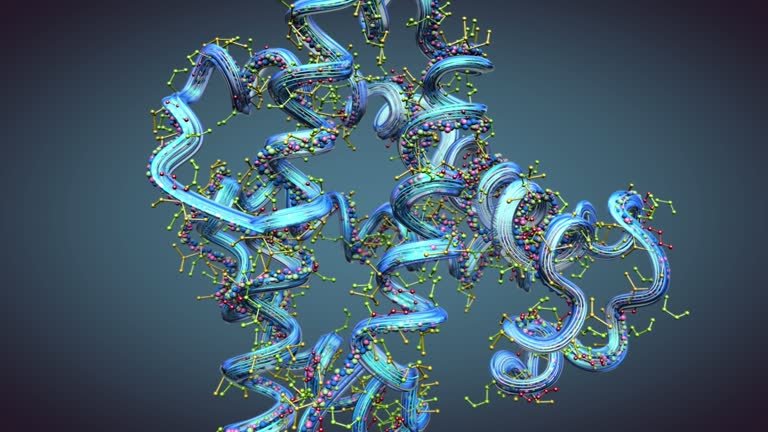High purity proteins are a cornerstone of biochemical research and biotechnology applications. These proteins are critical for a wide range of studies, from structural biology to therapeutic development. Achieving high purity in protein production is essential for the accuracy, reproducibility, and success of experiments, making it a vital component of research in fields such as drug development, molecular biology, and diagnostics.
In this article, we will explore the importance of high purity proteins, how they are produced, and the benefits they provide in biochemical research.
What is High Purity Protein?
High purity protein refers to proteins that are isolated and purified to a level where contaminants and impurities are removed, leaving the protein in its most active and functional state. The purity of the protein is often quantified using various biochemical methods, with purity levels generally ranging from 90% to 99.9% or higher, depending on the specific requirements of the application.
The purification process typically involves techniques such as chromatography, precipitation, and electrophoresis, which allow scientists to separate the target protein from other cellular components and contaminants. High purity proteins are essential for studies that require precise measurements, such as enzyme activity assays, protein-protein interaction studies, and structural analyses.
Why is High Purity Important in Biochemical Research?
In biochemical and molecular biology research, the quality and purity of the protein are crucial to the reliability and validity of experimental results. Some key reasons why high purity is important include:
1. Accuracy and Reproducibility of Experiments
Contaminants in protein samples can interfere with experimental results, leading to inaccurate data. For example, when studying enzyme kinetics or protein function, impurities can affect enzyme activity, binding affinity, and other functional characteristics. High purity proteins ensure that the observed effects are solely due to the protein of interest, enhancing the accuracy and reproducibility of experiments.
2. Structural Studies and Crystallography
High purity is critical for structural studies, such as X-ray crystallography or nuclear magnetic resonance (NMR) spectroscopy. Impurities in the protein sample can obstruct the formation of well-ordered crystals or interfere with NMR signals, leading to poor-quality data. To obtain high-resolution structural information about a protein, it must be in its purest form to avoid misinterpretation of the results.
3. Therapeutic Development and Diagnostics
In drug discovery and diagnostics, high purity proteins are used to identify potential drug targets, screen for drug candidates, and develop diagnostic assays. Impurities in these proteins can compromise the accuracy of screening assays or therapeutic efficacy. For example, in antibody production or vaccine development, contaminants could introduce undesirable immune responses, reducing the efficacy or safety of the treatment.
4. Protein-Protein Interaction Studies
Understanding how proteins interact with each other is fundamental for drug discovery and molecular biology. High purity proteins are essential for protein-protein interaction assays, such as co-immunoprecipitation or surface plasmon resonance. Any contaminants present in the sample could bind nonspecifically or interfere with the protein’s ability to interact with its binding partners, leading to false results.
Methods of Producing High Purity Proteins
To obtain high purity proteins, researchers use a variety of protein purification techniques. These methods are often tailored to the specific protein being studied and its unique properties, such as size, charge, and solubility. Some of the most commonly used methods for purifying proteins include:
1. Chromatography
Chromatography is one of the most widely used techniques for protein purification. It separates proteins based on their different physical or chemical properties, such as size, charge, or hydrophobicity. Common forms of chromatography used for high purity protein isolation include:
- Affinity Chromatography: This method uses a specific ligand or antibody that binds to the target protein, allowing for its selective isolation. After binding, the protein is eluted and collected, providing high purity.
- Ion Exchange Chromatography: This technique separates proteins based on their charge. Proteins are loaded onto a charged resin, and their elution is controlled by altering the salt concentration, allowing for the separation of proteins with different charge properties.
- Size Exclusion Chromatography (SEC): SEC separates proteins based on their size. Smaller proteins will enter the pores of the chromatographic resin, while larger proteins will pass through more quickly, allowing for the separation of proteins of different molecular sizes.
2. Electrophoresis
Electrophoresis is a technique that uses an electric field to separate proteins based on their size and charge. SDS-PAGE (sodium dodecyl sulfate-polyacrylamide gel electrophoresis) is one of the most commonly used methods for protein separation and analysis. After electrophoresis, the proteins can be visualized, and the purity of the protein can be assessed by the number of bands in the gel.
3. Precipitation
Protein precipitation involves the addition of salts or solvents to a protein solution, causing the protein to aggregate and precipitate out of solution. This method is often used as a first step in protein purification, followed by more specific purification techniques like chromatography.
4. Ultrafiltration
Ultrafiltration is a membrane filtration technique that separates proteins based on their size. This technique can be used for concentrating proteins, removing small molecules, or further purifying proteins after chromatography.
5. Affinity Tags and Recombinant Proteins
For recombinant proteins, researchers often use affinity tags, which are short peptide sequences added to the protein of interest. These tags allow the protein to bind specifically to a column during purification, facilitating high purity isolation. Examples of commonly used tags include His-tags, GST-tags, and FLAG-tags.
Benefits of High Purity Protein in Biochemical Research
The use of high purity proteins provides numerous benefits in biochemical and molecular biology research, including:
1. Increased Sensitivity in Assays
High purity proteins allow for more sensitive detection and analysis in a wide range of assays, such as enzyme activity assays, protein-ligand binding studies, and immunoassays. With fewer contaminants present, the experimental conditions are more controlled, leading to more accurate and sensitive results.
2. Enhanced Protein Functionality
Proteins with high purity levels are more likely to retain their native structure and function, which is essential for studying biological processes. Impurities can disrupt protein folding, leading to loss of function or misfolded proteins, which can interfere with experiments.
3. Consistency Across Experiments
Using high purity proteins ensures that experimental results are consistent and reliable. Variability in protein quality due to contamination can lead to discrepancies between experiments, making it difficult to draw meaningful conclusions.
4. Increased Yield
Purification processes that focus on obtaining high purity proteins often result in higher yields of functional protein, which can be used in multiple experiments or applications. This is especially valuable when large quantities of protein are required for structural studies or therapeutic development.
5. Faster Troubleshooting and Optimization
With high purity proteins, researchers are better equipped to troubleshoot issues in their experiments and optimize their protocols. Purity ensures that the results are due to the protein of interest, rather than interference from contaminants or impurities.
Challenges in Producing High Purity Proteins
While high purity protein production offers many benefits, there are also challenges associated with the process:
- Time and Cost: Purifying proteins to high purity can be time-consuming and costly, particularly for large-scale production. The complexity of the purification protocol and the need for specialized equipment can add to the expense.
- Protein Loss: During the purification process, there is always a risk of losing some protein, either due to inefficient separation or degradation. This can result in lower yields, especially for proteins that are difficult to purify or unstable.
- Protein Folding: Some proteins may require specific conditions or molecular chaperones to fold correctly, which can complicate the purification process and affect the protein’s functionality.
Conclusion
High purity proteins are essential for the success of biochemical and molecular research, ensuring that experiments are accurate, reproducible, and reliable. The use of advanced purification techniques and recombinant technology allows scientists to isolate proteins in their most functional and active forms. While challenges such as time, cost, and protein loss remain, the benefits of high purity proteins far outweigh the drawbacks, making them indispensable tools in scientific discovery and therapeutic development. As technology continues to advance, the production of high purity proteins will play an even greater role in unlocking the secrets of biology and driving innovations in medicine and biotechnology.









